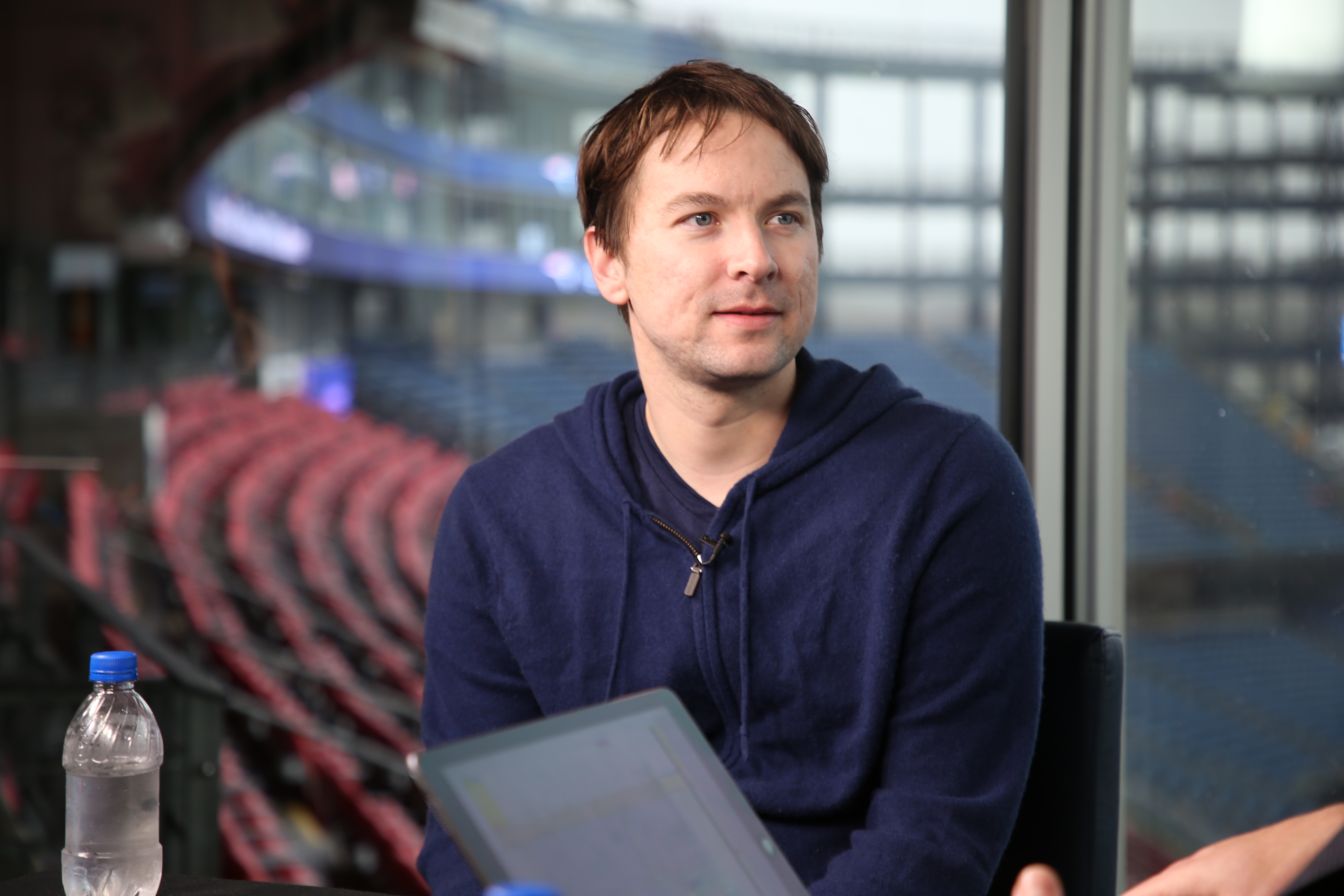 CLOUD
CLOUD
 CLOUD
CLOUD
 CLOUD
CLOUD
The proliferation of cloud technologies has created a new landscape of opportunities for businesses in a range of industries, but not every organization has the capacity to discover and leverage the most applicable resources available on the market.
When Amazon Web Services Inc. centralized these options in the AWS Marketplace, it was just the beginning of their mission to enable accessibility in building and operating digital business. From templated cloud migration to satellite ground station-as-a-service, Randall Hunt (pictured), senior technical evangelist and software engineer at Amazon Web Services Inc., says AWS is letting customer needs drive the product roadmap, even all the way to space.
Hunt spoke with Stu Miniman (@stu), host of theCUBE, SiliconANGLE Media’s mobile livestreaming studio, during the VTUG Winter Warmer event in Foxborough, Massachusetts. They discussed how AWS is working with customers to develop the most functional enterprise cloud tools. The following answers have been condensed for clarity.
Tell us a little bit about yourself, your role, what you work on and what customers you talk to.
I studied physics, and then I found out physicists don’t really make any money. So I became a software engineer, and I worked at NASA, SpaceX and Mongo DB. [Now] I am at Amazon as a software engineer, but I’m also a technical evangelist. I make all of the demos, chat with our customers and solicit feedback from them, and try to act as the voice of the customer for the service teams.
I think space as a whole is getting easier. This industry is becoming more approachable. One of the things that we launched this year was a ground station, and you can basically downstream that data to one of these ground stations. I’m looking forward to the first availability zone on the on the moon or Mars.
One of things that Amazon has done really well is, I don’t need to be a physics geek to be able to use this technology. In the future, it seems like serverless computing goes even further along that spectrum.
There’s opportunities for folks who are industry-adjacent data scientists who may not necessarily be software engineers, but they know how to write basic code. There’s a lot of opportunity now for those developers to go and write a Lambda function and have it accomplish a large portion of the business logic for their whole company. You have a spectrum of computer options, Amazon Elastic Compute Cloud on one side, and then you have containers.
You can even go further than that with things like Amplify, which is an open-source project that we launched that takes a bunch of different AWS services together and builds the code pipeline for you without you having to worry about all that stuff.
In the last five years, the proliferation of services in AWS got to a point where there are more choices in the public cloud. I have to start clean and say, “What’s the goal, what data do I need, what applications?” How do you help companies through that?
That is a really common scenario. Enterprises and companies have existed since before the cloud was really around, so why do we keep seeing so much uptick, and how do you make it easier for customers to get into the cloud with their existing workload? If you have greenfield projects, I would absolutely start in the cloud and build cloud-native. That’s part of the one of the things that we launched this year in partnership with VMware, [an] interface for AWS so you can use your native vCenter and vSphere control plane to access, and all the underlying stuff you are interested in running.
One [operations] person can manage this whole suite of things across 19, 20 regions of AWS, and as you keep moving more and more workloads over, it’s not static. You can evolve, adjust the application, add new features and build new stuff as you’re moving these applications over to the cloud.
At AWS, if a customer is asking us to build something, we’re going to do our best to make that customer happy. We take customer feedback so incredibly seriously. We have this control plane; we have this hardware. Let’s figure out how to get it to more customers.
Here’s the complete video interview, part of SiliconANGLE’s and theCUBE’s coverage of the VTUG Winter Warmer event:
Support our mission to keep content open and free by engaging with theCUBE community. Join theCUBE’s Alumni Trust Network, where technology leaders connect, share intelligence and create opportunities.
Founded by tech visionaries John Furrier and Dave Vellante, SiliconANGLE Media has built a dynamic ecosystem of industry-leading digital media brands that reach 15+ million elite tech professionals. Our new proprietary theCUBE AI Video Cloud is breaking ground in audience interaction, leveraging theCUBEai.com neural network to help technology companies make data-driven decisions and stay at the forefront of industry conversations.